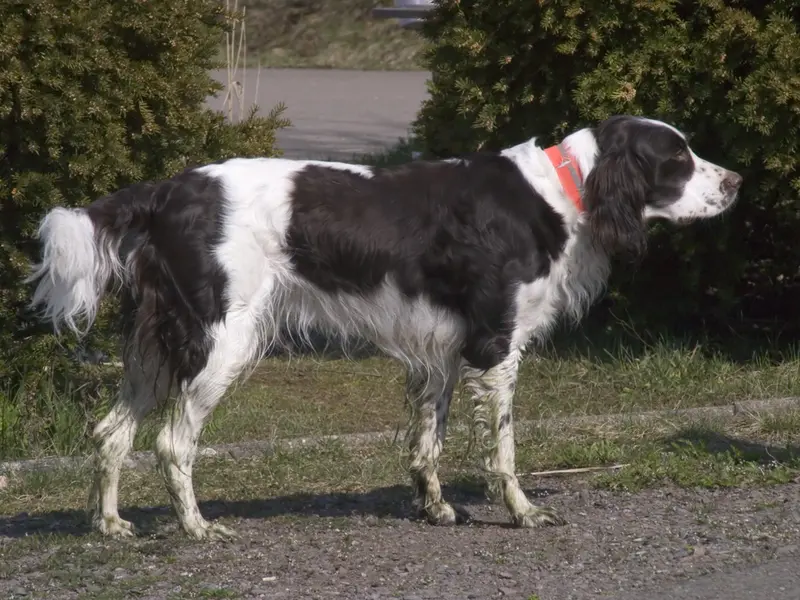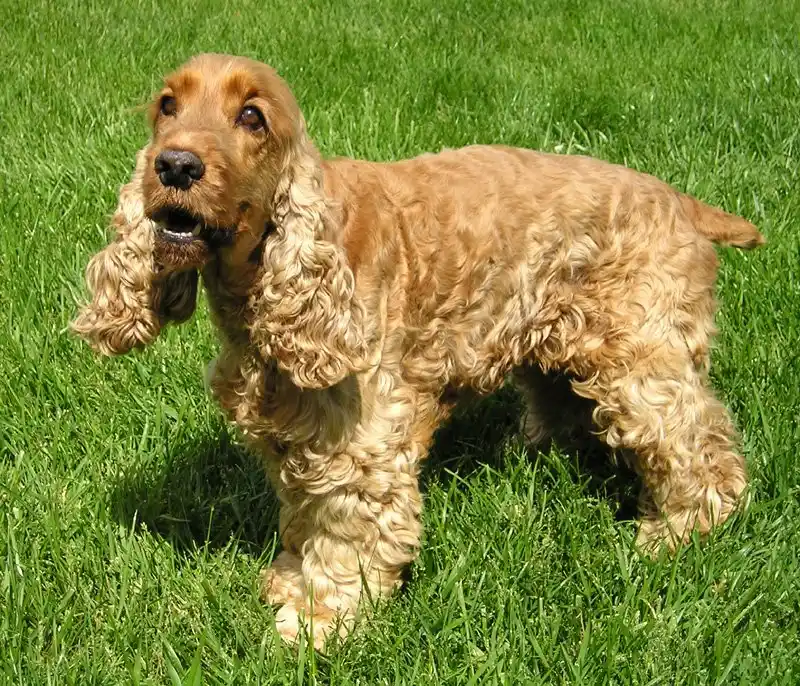Limer
The Limer is an energetic and friendly breed, known for its intelligence and adaptability. Ideal for active families, they thrive on exercise and companionship.
Overview
🐕Breed Overview
✨Key Traits
💡What Makes Limer Special
One of the standout traits of the Limer is its versatility. They excel in various roles, from family pets to working dogs in hunting and therapy. Their intelligence allows them to learn commands quickly, and they often enjoy participating in dog sports.
Limers are also known for their loyalty and protective instincts, making them excellent companions for families. Their playful nature means they are always up for a game, whether it's fetch or a romp in the park. This breed's adaptability allows them to thrive in different living environments, provided their exercise needs are met.
Overall, Limers are well-rounded dogs that bring joy and energy to any household.
The Limer is a dynamic and affectionate breed, known for its playful spirit and intelligence. Originating in the United States, this breed was developed to be a versatile companion, excelling in both family life and outdoor activities. With a friendly demeanor, Limers are great with children and other pets, making them an ideal choice for families.
Their high energy levels require regular exercise, ideally 60 to 90 minutes a day, which can include activities like running, fetching, and participating in dog sports. Limers are also known for their trainability, responding well to positive reinforcement methods. Their adaptability allows them to thrive in various living situations, from spacious homes to apartments, as long as their exercise needs are met.
Grooming is relatively easy, requiring regular brushing to manage shedding. Overall, Limers are loving, loyal companions that bring joy and energy to any household.
🎉Fun Facts
Limers are known for their playful antics and love to engage in games with their families.
Limers are often used as therapy dogs due to their gentle and friendly nature.
They have a natural affinity for water and often enjoy swimming and retrieving.
Breed Characteristics
Family & Friends
Good Behavior
Get Up & Go
Household Harmony
Temperament & Personality
✨Key Traits
🐕Core Temperament
The Limer's temperament is characterized by its friendly and sociable nature. They are generally calm and patient, making them great companions for children and other pets.
Limers are known for their playful spirit, often engaging in games and activities with their families. They are protective of their loved ones but are not aggressive, making them suitable for family environments.
Their intelligence and eagerness to please make them responsive to training, although they may exhibit stubbornness at times. Overall, Limers are well-balanced dogs that thrive on companionship and activity.
💫Personality Profile
Limers are known for their friendly and outgoing personalities. They are highly social dogs that thrive on human interaction and companionship. Their playful nature makes them great with children, and they often form strong bonds with their families.
Limers are intelligent and eager to please, making them relatively easy to train. They enjoy being active and require regular exercise to keep them happy and healthy. Their affectionate demeanor means they often seek physical closeness and enjoy cuddling with their owners.
However, they can be a bit exuberant, especially when greeting people or other pets, so early socialization is important to help them learn appropriate behaviors.
🔊Vocal Tendencies
Limers have a moderate noise level, typically barking to alert their owners of new visitors or to express excitement during playtime. They may also whine when seeking attention or when feeling anxious.
While they are not excessive barkers, their vocalizations can vary depending on their mood and environment. Training can help manage their barking tendencies, especially in situations where they may be prone to excessive vocalization, such as when greeting guests or during play.
Affection & Social Traits
Energy & Activity
Communication Style
Care Requirements
🏃♂️Exercise Requirements
Daily Exercise
Limer dogs are known for their energetic and playful nature, requiring a significant amount of daily exercise to maintain their physical and mental well-being. Ideally, they should engage in at least 60 to 90 minutes of exercise each day, which can be broken down into multiple sessions.
Activities such as brisk walks, running, playing fetch, and engaging in dog sports like agility or flyball are excellent for meeting their exercise needs. Puppies may require shorter, more frequent play sessions to avoid overexertion, while senior dogs may benefit from gentler activities like leisurely walks or swimming.
Regular exercise helps prevent obesity, promotes cardiovascular health, and reduces behavioral issues stemming from pent-up energy. Insufficient exercise can lead to destructive behaviors, anxiety, and increased risk of health problems, making it essential for owners to prioritize their Limer's activity levels.
Preferred Activities
🏠Living & Adaptability
Space Requirements
Limer dogs thrive in environments that provide ample space for them to roam and play. They are adaptable to various living situations, including homes with large yards or rural settings.
However, they can also adjust to apartment living if their exercise needs are met through regular outdoor activities. Owners in smaller spaces should ensure daily walks and playtime in parks or open areas to keep their Limer engaged and happy.
The breed's size and energy level necessitate a space where they can move freely; otherwise, confinement may lead to anxiety or destructive behavior.
Climate Preference
🍲Feeding Guide
Schedule
Food Types
Portion Size
Special Nutritional Needs
Limers may benefit from a diet rich in protein to support their active lifestyle. It's essential to monitor their weight and adjust portions accordingly to prevent obesity. Some Limers may have food sensitivities, so it's advisable to consult with a veterinarian for personalized dietary recommendations.
✨Grooming Requirements
Grooming Overview
The Limer has a medium-length coat that requires regular grooming to keep it healthy and free of mats. Brushing should be done at least once a week to manage shedding and prevent tangles.
During shedding seasons, more frequent brushing may be necessary. Bathing should be done as needed, typically every few months, or when they become particularly dirty.
Regular nail trimming and ear cleaning are also essential to maintain overall hygiene. Using the right grooming tools, such as a slicker brush and dog shampoo, will help keep their coat looking its best.
Care Schedule
Brush weekly; bathe every 1-2 months; trim nails every 2-4 weeks.
Health Profile
⚕️Health Care
Regular veterinary care is essential for maintaining the health and longevity of Limer dogs. Routine check-ups, vaccinations, and preventive treatments can help catch health issues early and ensure that the dog remains in optimal health throughout its life. Owners should also be proactive in monitoring their dog's health and behavior, seeking veterinary advice when necessary to address any concerns promptly.
Health Issues Overview
⏳Average Lifespan
Genetic Factors
Genetics play a crucial role in the lifespan of Limer dogs. Responsible breeding practices that prioritize genetic diversity can help reduce the risk of hereditary health issues.
Potential owners should seek reputable breeders who conduct health testing on their breeding stock to minimize the likelihood of genetic disorders. Understanding the breed's lineage can provide insights into potential health risks and longevity.
Living Conditions
Limer dogs thrive in environments that provide ample opportunities for exercise and social interaction. Living in a home with a yard or access to parks can significantly enhance their quality of life and longevity.
Additionally, a stable and loving environment with regular human interaction contributes positively to their emotional well-being, which can impact their lifespan. Limers that are kept active and engaged tend to live longer, healthier lives compared to those that are sedentary or isolated.
🏥Common Health Issues
Hip Dysplasia
Warning Signs
🔬Diagnosis
X-rays and physical examination by a veterinarian.
💊Treatment
Surgery or medication may be necessary in severe cases.
📝Management Tips
Maintain a healthy weight through diet and exercise; consider joint supplements as recommended by a vet.
Progressive Retinal Atrophy (PRA)
Warning Signs
🔬Diagnosis
Veterinary eye examination.
💊Treatment
No cure, but management strategies can help.
📝Management Tips
Regular eye check-ups; monitor for vision changes.
Allergies
Warning Signs
🔬Diagnosis
Allergy testing and elimination diet.
💊Treatment
Antihistamines or corticosteroids may be prescribed.
📝Management Tips
Identify and avoid allergens; consider hypoallergenic diets.
🛡️Preventive Care
🔬Hip Evaluation
Hip Evaluation assesses the hip joints for dysplasia and other abnormalities, crucial for active breeds like the Limer.
📅 Annually after 2 years of age.
🔬Eye Examination
Eye Examination checks for hereditary eye conditions, including PRA, which can affect vision in Limers.
📅 Every 1-2 years, especially as they age.
🔬Allergy Testing
Allergy Testing identifies specific allergens that may affect the dog's skin and overall health, helping to manage allergies effectively.
📅 As needed, especially if symptoms arise.
Training
🧠Intelligence & Trainability
💪Work Drive
Limer dogs have a strong work drive and thrive when given tasks to complete. Activities such as agility training, obedience competitions, and scent work can provide the mental stimulation they need.
Engaging them in regular training sessions or dog sports not only keeps them physically active but also satisfies their need for mental challenges. Without sufficient engagement, they may become bored and exhibit undesirable behaviors.
⚠️Training Considerations
Limer dogs may face behavioral challenges such as excessive energy, which can lead to destructive behaviors if not properly managed. They may also exhibit stubbornness during training sessions, requiring consistent and positive reinforcement methods.
Socialization is crucial to prevent shyness or over-excitement around new people or pets. To overcome these challenges, owners should establish a routine that includes regular training sessions, socialization opportunities, and mental stimulation through puzzle toys or interactive games.
📝Training Tips
Training a Limer requires patience and consistency. Positive reinforcement techniques, such as treats and praise, work best to motivate them.
Start with basic commands like sit, stay, and come, gradually introducing more complex tasks. Incorporating play into training sessions can keep them engaged and make learning enjoyable.
Regular socialization with other dogs and people is essential to develop their confidence and reduce any anxiety in new situations. Owners should also consider enrolling their Limer in obedience classes or dog sports to enhance their skills and strengthen the bond between dog and owner.
History & Heritage
📜Origin Story
The Limer breed originated in the United States, where breeders sought to create a dog that combined the best traits of retrievers with the adaptability of local working breeds. The goal was to produce a dog that could excel in various roles, from family companion to hunting partner.
The breed quickly gained traction among outdoor enthusiasts and families alike, thanks to its friendly nature and high energy levels. As the breed became more established, it was recognized for its intelligence and trainability, making it a popular choice for dog sports and activities.
⏳Development History
The Limer breed was developed in the late 20th century by crossing various retriever breeds with local working dogs to create a versatile companion suitable for both family life and outdoor activities. Over the years, breeders focused on enhancing their friendly temperament, intelligence, and athleticism, leading to the establishment of breed standards that emphasize these traits. The breed has evolved to become a popular choice for active families and individuals who enjoy outdoor pursuits.
🛡️Purpose & Historical Role
Historically, the Limer was bred for versatility, serving as both a hunting companion and a family pet. They excelled in retrieving game due to their strong instincts and agility. Over time, their role expanded to include participation in dog sports, therapy work, and as loyal family companions, showcasing their adaptability and intelligence.
🏺Cultural Significance
The Limer breed has gained popularity in various regions due to its friendly demeanor and versatility as a family pet and working dog. They are often featured in community events and dog shows, showcasing their agility and intelligence. Their friendly nature makes them a favorite among families, and they are frequently seen in media as the ideal family companion, further solidifying their cultural significance.
Conservation Status
This breed is well-established with healthy population numbers.









